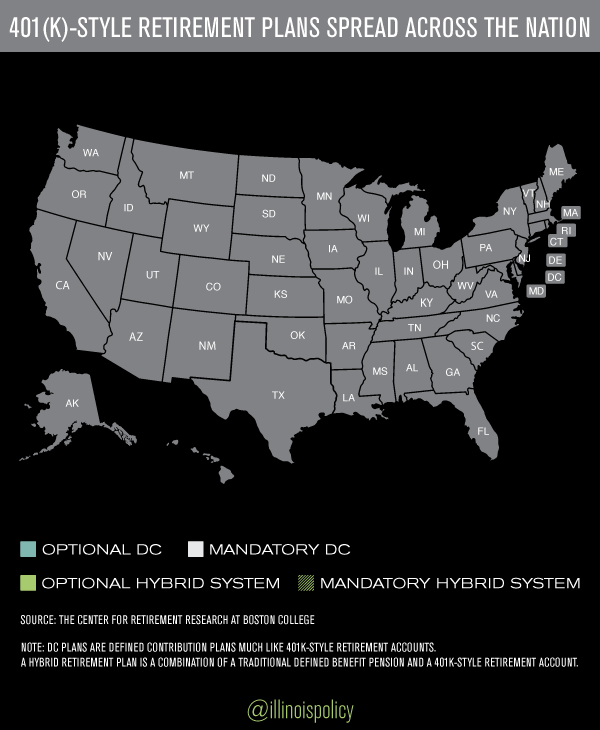Oklahoma pension reform: 401(k)-style plans for new state workers
In a step toward meaningful pension reform, Oklahoma Gov. Mary Fallin signed legislation that ends the state’s traditional pension retirement system for newly hired state employees in favor of a 401(k)-style retirement plan. Teachers and state workers designated “hazardous duty” including firefighters and law enforcement officers are exempt. And the legislation does not change the...
In a step toward meaningful pension reform, Oklahoma Gov. Mary Fallin signed legislation that ends the state’s traditional pension retirement system for newly hired state employees in favor of a 401(k)-style retirement plan.
Teachers and state workers designated “hazardous duty” including firefighters and law enforcement officers are exempt. And the legislation does not change the pension system for current employees or retirees.
Beginning in November 2015, Oklahoma’s new state workers would be covered by a defined-contribution plan.
Fallin praised an earlier version of the bill:
“Moving to the more modern, 401(k)-style model helps state government to accomplish two important goals. First, it helps us to recruit qualified new hires by providing more flexible, versatile retirement options.
“… Second, it helps to stabilize the pension system for current public employees. Oklahoma pension systems currently have $11 billion in unfunded liabilities. The system as it stands today is not financially sound. It’s important we shore up our pension systems so we can pay out the benefits we have promised to our retirees.”
When signed into law, Oklahoma will join Michigan and Alaska in requiring its new employees to participate in defined contribution plans. Michigan made the move in 1996 and Alaska in 2005.
Six other states already offer optional defined contribution plans for some of their employees. Employees in Florida, Montana, South Carolina, North Dakota, Ohio and Colorado can choose between staying in the traditional defined benefit plan or moving to a 401(k)-style plan.
Another 10 states offer either mandatory or optional participation in hybrid retirement plans that combine both defined benefit and defined-contribution plans. Six of those states – Georgia, Utah, Michigan (public schools), Rhode Island, Virginia and Tennessee – passed mandatory hybrid systems for new employees after the Great Recession.
Illinois can take cues from states such as Oklahoma in tackling the pension crisis that threatens the state’s budget and government worker retirements. 401(k)-style plans offer the budget certainty Illinois needs and the retirement security its government workers deserve.
Fortunately for Illinois, a model plan already exists in-state.
Illinois’ State Universities Retirement System offers an optional 401(k)-style plan to its employees. Plan participants that opt in are required to contribute 8 percent of their salary toward the self-managed plan. The state contributes an additional 7 percent into the member’s account. In total, employees put away the equivalent of 15 percent of their salary yearly into a portable account that the employee, not the government, legally owns and controls.
More than 17,500 state university workers have opted into the self-managed plan since its inception in 1997.
State university employees shouldn’t be the only workers that have the option of a retirement plan free of government mismanagement. Illinois should expand that option to all of state and city workers.
